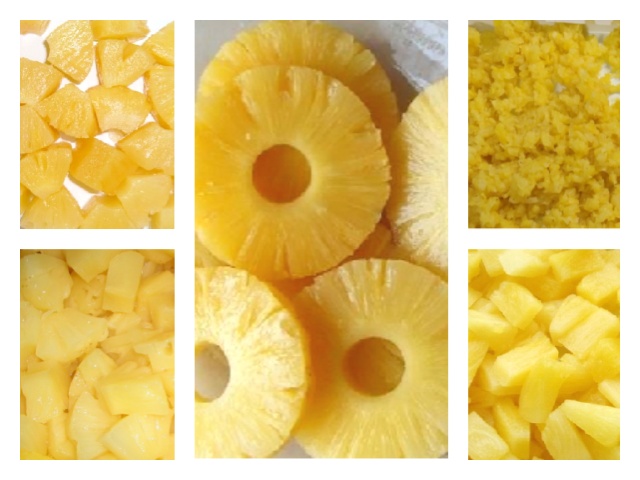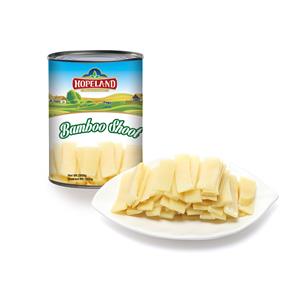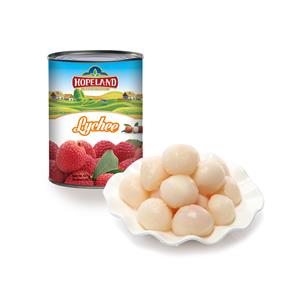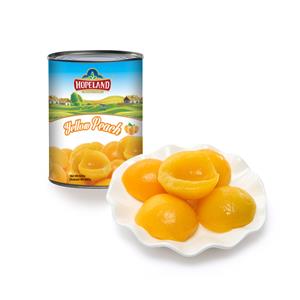Canned Pineapple: A Tropical Treat for Every Table
Few foods capture the essence of the tropics as beautifully as pineapple. With its golden flesh, juicy sweetness, and delicate balance of tartness, pineapple is a fruit that instantly brings to mind sunshine, beaches, and island breezes. While fresh pineapple has its charm, its canned counterpart has quietly revolutionized kitchens around the world — offering convenience, consistency, and year-round access to this tropical delight.
Canned pineapple is more than just preserved fruit. It represents a fascinating blend of agricultural craftsmanship, food science, and culinary versatility. From a quick pizza topping to a luxurious dessert ingredient, canned pineapple continues to find new admirers among home cooks, professional chefs, and health-conscious consumers alike.
In this article, we’ll explore everything about canned pineapple — from its history and production process to its nutritional value, culinary applications, and its enduring place in global markets.
1. The Journey of Pineapple: From Tropics to Tin
A Fruit with a Royal Legacy
The pineapple (Ananas comosus) originated in South America, particularly in the region between southern Brazil and Paraguay. Indigenous peoples cultivated it long before European explorers arrived. When Christopher Columbus encountered the fruit in 1493 during his voyage to the Caribbean, he was so struck by its sweetness and aroma that he brought it back to Europe as a rare delicacy.
Because pineapples were difficult to transport and spoiled quickly, they became a luxury item in Europe, often displayed at royal feasts and banquets. They were a symbol of hospitality, wealth, and prestige.
The Birth of Canning
It wasn’t until the late 19th and early 20th centuries that the pineapple became widely available, thanks to the development of commercial canning. Hawaii, the Philippines, and Thailand emerged as major centers of pineapple cultivation and processing. Companies like Dole and Del Monte perfected the art of canning pineapple, transforming it from an exotic rarity into a household staple.
The process of canning allowed pineapples to retain their bright flavor and texture while ensuring they remained safe and shelf-stable for years. By the mid-20th century, canned pineapple was a common sight in pantries around the world, used in salads, cakes, drinks, and savory dishes.
2. How Canned Pineapple Is Made
The production of canned pineapple involves a carefully controlled process designed to preserve freshness, flavor, and nutrition while ensuring food safety.
Step 1: Harvesting and Selection
The journey begins in tropical plantations where pineapples are grown in rich, well-drained soils under abundant sunlight. Once the fruit reaches full ripeness — typically after 18 to 24 months — it is harvested. Only the healthiest, most perfectly ripened pineapples are chosen for canning, as underripe or overripe fruits can affect both texture and flavor.
Step 2: Cleaning and Peeling
After harvest, pineapples are quickly transported to the processing plant. They are thoroughly washed to remove dirt and surface contaminants. Next, machines remove the rough outer skin and the fibrous core, leaving only the juicy, edible flesh.
Step 3: Cutting and Grading
The peeled pineapples are then cut into various shapes depending on the desired product type:
Slices (Rings) – Ideal for desserts, pizzas, and garnishes.
Chunks – Perfect for salads, stir-fries, and sweet-and-sour dishes.
Tidbits – Smaller pieces for baking, yogurt toppings, and fruit mixes.
Crushed – Used in smoothies, cakes, and sauces.
Each piece is graded for uniform size and appearance to ensure consistent quality.
Step 4: Syrup Filling
The cut pineapple pieces are packed into cans and covered with a liquid medium — typically light syrup, heavy syrup, pineapple juice, or water. The syrup not only enhances flavor but also helps maintain color and texture during storage.
Step 5: Sealing and Sterilization
The filled cans are hermetically sealed to prevent air entry, then subjected to heat sterilization. This process destroys any bacteria or enzymes that could cause spoilage. After cooling, the cans are labeled, packed, and ready for distribution.
3. Varieties of Canned Pineapple
Canned pineapple is available in several forms to suit different culinary needs and preferences:
Type | Description | Common Uses |
Pineapple Slices (Rings) | Whole cross-sections of the fruit, often perfectly round | Ideal for garnishing desserts, topping pizzas, or layering in cakes |
Chunks | Medium-sized pieces | Great for salads, stir-fries, and skewers |
Tidbits | Small, uniform cubes | Popular for yogurt, cereals, and baking |
Crushed Pineapple | Finely chopped pieces in juice or syrup | Used in cakes, pies, and smoothies |
Pineapple Juice | Extracted from ripe pineapples, sometimes a byproduct of canning | Consumed as a beverage or used in marinades and sauces |
Each type offers the characteristic sweetness and tang of pineapple, but their textures and moisture levels lend themselves to different recipes.
4. Nutritional Value and Health Benefits
Canned pineapple retains much of the nutritional goodness of fresh fruit. Although some vitamins, particularly vitamin C, may decrease slightly during processing, it remains a rich source of essential nutrients.
Key Nutrients in Canned Pineapple (per 100g):
Calories: ~60 kcal
Carbohydrates: 15g
Sugars: 13g
Fiber: 1g
Vitamin C: 9mg
Manganese: 0.9mg
Bromelain (enzyme): trace amounts
Health Benefits
Rich in Antioxidants
Pineapple contains phenolic acids and flavonoids, which help combat oxidative stress and reduce inflammation.
Digestive Support
Bromelain, a natural enzyme found in pineapples, helps break down proteins and supports healthy digestion.
Immunity Booster
Vitamin C enhances immune function, helping the body fight infections and promoting collagen formation.
Bone Health
Manganese plays a vital role in bone development, connective tissue formation, and metabolism.
Hydration and Weight Control
With high water content and low fat, canned pineapple is refreshing, hydrating, and suitable for low-calorie diets.
5. Culinary Versatility: How to Enjoy Canned Pineapple
Canned pineapple’s greatest charm lies in its adaptability. Whether you’re preparing a tropical dessert, a savory Asian dish, or a refreshing drink, this ingredient delivers flavor and color effortlessly.
Sweet Dishes
Pineapple Upside-Down Cake
A timeless favorite that highlights the beauty of pineapple rings glazed in caramelized sugar and butter.
Pineapple Cheesecake or Tart
Crushed pineapple adds tang and moisture to creamy desserts.
Tropical Fruit Salad
Combine tidbits with mango, papaya, and kiwi for a vibrant mix.
Pineapple Ice Cream or Sorbet
Blend canned pineapple with coconut milk for a refreshing tropical treat.
Savory Dishes
Sweet and Sour Chicken or Pork
Pineapple chunks add a perfect balance of sweetness and acidity to the sauce.
Hawaiian Pizza
A controversial yet beloved classic — pineapple slices bring juicy contrast to salty ham and melted cheese.
Grilled Skewers
Alternate pineapple chunks with shrimp, chicken, or bell peppers for smoky-sweet kebabs.
Stir-Fried Rice or Noodles
Add pineapple tidbits to elevate flavor and add a refreshing touch.
Beverages and Condiments
Pineapple Juice Cocktails
Use canned pineapple juice as a base for piña coladas, mocktails, or smoothies.
Salsa or Chutney
Mix diced pineapple with chili, onion, and cilantro for a zesty topping for grilled meats or fish.
6. Storage, Safety, and Sustainability
Shelf Life and Storage
Unopened canned pineapple typically lasts up to two years when stored in a cool, dry place. Once opened, transfer any unused portion to a sealed glass or plastic container and refrigerate. It’s best consumed within 3–5 days.
Safety Tips
Avoid cans that are bulging, rusted, or dented, as these may indicate contamination.
Always use clean utensils when handling canned fruit to prevent spoilage.
Sustainability Efforts
Modern pineapple canning plants are increasingly focused on sustainability. Many producers now:
Utilize pineapple peels and cores for composting or producing animal feed.
Convert wastewater from processing into biogas energy.
Support fair trade and community development in pineapple-growing regions.
Such initiatives reduce environmental impact while supporting ethical and responsible production.
7. Global Market and Trade Overview
Canned pineapple remains a significant commodity in the global food trade, driven by consistent demand for convenient, healthy, and affordable fruit products.
Major Producing Countries
Thailand – The world’s leading exporter of canned pineapple, known for its sweet, firm fruit.
Philippines – A top supplier to the U.S. and Asian markets, with established brands like Dole and Del Monte.
Indonesia, Kenya, and China – Emerging exporters, focusing on cost efficiency and growing European demand.
Key Import Markets
The United States, Japan, Europe, and the Middle East are the primary consumers, with increasing demand in Africa and South America.
Retail, catering, and industrial food sectors rely heavily on canned pineapple for consistency and year-round availability.
Market Trends
Growing preference for pineapple in natural juice instead of heavy syrup.
Rising demand for organic and fair-trade certified products.
Innovative packaging such as easy-open lids and BPA-free cans to meet consumer expectations.
8. Why Choose Canned Pineapple Today
Canned pineapple remains a staple not just for its convenience but for what it represents — a smart balance between taste, nutrition, and practicality. It’s ready-to-eat, requires no peeling or cutting, and retains that unmistakable tropical flavor regardless of the season.
Here are a few reasons why it’s still a pantry essential:
Consistency: Uniform flavor and texture every time.
Versatility: Suitable for breakfast, main dishes, desserts, and drinks.
Longevity: Long shelf life without preservatives.
Value: Economical and reduces fruit waste.
For manufacturers and traders, canned pineapple also symbolizes reliable global commerce — connecting farmers, processors, and consumers in a shared appreciation for the world’s favorite tropical fruit.
9. Conclusion: A Taste That Travels the World
Canned pineapple is more than preserved fruit in a tin — it’s a story of innovation, tropical abundance, and culinary creativity. From its origins in South American jungles to bustling factories in Thailand or the Philippines, it has come a long way to become an everyday pleasure on tables around the globe.
Whether you enjoy it in a classic pineapple upside-down cake, a zesty sweet-and-sour dish, or a refreshing smoothie, canned pineapple delivers a burst of sunshine in every bite. It’s proof that with a touch of technology and tradition, even the most exotic fruit can become part of our daily lives — bright, flavorful, and timeless.






